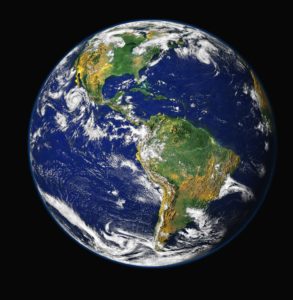 The US government would like to shut the Mauna Loa observatory in Hawaii down because it measures levels of atmospheric CO2, a measure of climate change. Well, unlike the US government, the rest of the world is very, very concerned about increasing CO2 levels in our atmosphere, and what increasing levels of greenhouse gases are doing to our climate and environment.
The US government would like to shut the Mauna Loa observatory in Hawaii down because it measures levels of atmospheric CO2, a measure of climate change. Well, unlike the US government, the rest of the world is very, very concerned about increasing CO2 levels in our atmosphere, and what increasing levels of greenhouse gases are doing to our climate and environment.
The United Nation's World Meteorological Organization (WMO) does not hesitate to loudly announce that CO2 levels are steadily rising, with record high levels in 2024, and what this means for our world going forward. Their words: it's "turbocharging our climate and leading to more extreme weather".
The important thing to know is that CO2 levels keep increasing, and each year new record high levels are set. Highest ever levels were in 2024. A big reason CO2 levels are increasing is due to the burning of fossil fuels (oil, gas, coal). The increase in wildfires is also contributing.
Excerpts from New Scientist: CO2 levels in Earth's atmosphere jumped by a record amount in 2024
Atmospheric carbon dioxide levels jumped by a record amount in 2024 to push concentrations to their highest point since measurements began, the UN’s World Meteorological Organization (WMO) has reported.
Between 2023 and 2024, the global average concentration of CO2 surged by 3.5 parts per million (ppm) to reach 423.9 ppm, the WMO has said. This is the largest increase since modern measurements started in 1957 and is well in excess of the 2022 to 2023 increase of 2.3 ppm.
It marks the latest in a trend of accelerating annual increases, with growth rates tripling since the 1960s. The last time Earth experienced a comparable concentration of CO2 was 3 million to 5 million years ago.
Excess CO2 in the atmosphere will have a warming effect on the planet for centuries to come, the WMO warns. “The heat trapped by CO2 and other greenhouse gases is turbocharging our climate and leading to more extreme weather,” Ko Barrett at the WMO said in a statement.
Ongoing emissions from fossil fuels, alongside a surge in emissions from wildfires and a slump in the carbon uptake by the world’s lands and oceans, were the key drivers of last year’s record surge, according to the WMO.
Researchers expected a slump in the uptake of carbon by oceans, forests and other ecosystems in 2024 due to the recent El Niño weather pattern, which pushed up global temperatures and dulled carbon absorption by driving heat, fires and drought in key regions like the Amazon. The amount of tropical forest lost in 2024 was double that of 2023, scientists noted earlier this year. “It is normal for some tropical lands to be drier and store less carbon during warm El Niño years such as 2024,” says Richard Allan at the University of Reading, UK.
But there is concern that this dip in carbon uptake by the planet – particularly by the land – is part of a longer-term trend that could mean climate change is weakening the planet’s ability to soak up excess carbon.
